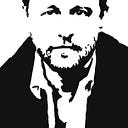Jung Predicted Trump. Kinda.
President Trump recently engineered a photo-op by using the police to push protestors away from St. John’s Episcopal Church in Washington DC.
His press secretary, described the whole thing this way:
“This moment was huge today. President Donald Trump took a firm stand for legitimate authority over our nihilistic post-modern society that denies objective truth.”
There’s a lot to unpack there. Let’s rewind quite a ways.
Somewhat under 200 years ago, Fredrich Neitzsche said God was dead. Despite how some people characterize this declaration, Nietzsche wasn’t trolling Christians. He was actually bemoaning the fact that we, as humans, thanks to rationality and reason, had kind of abandoned the meaning of life provided to us by belief in the sacred.
Nietzsche, despite being critical of dogmatic religion and literalism, believed that man needed transcendent principals to guide him.
Swiss Psychologist Carl Jung agreed with this — and with the idea that science and reason, combined with religion’s insistence on dogma had indeed signaled, in Nietzsche’s words, the death of god.
In light of that death, when lacking transcendent values to turn to, Jung believed mankind would opt for either Nihilism (the worship of nothing) or totalitarianism — the worship of the state.
From what I’ve seen of Kayleigh McEnany, the president’s press secretary, I kind of doubt she’s read much Jung, but maybe whoever writes her press releases has. McEnany clearly points to nihilism as the enemy, and suggest true power and “legitimate authority” rests in the state.
Jung believed Neither Nihilism not totalitarianism were legitimate alternatives to transcendent values. So what do we do about that? How do transcendent values gain back the ground lost by dogma and reason?
Jung suggested that the way for such values to become relevant to humans again was through a marriage of opposites. An alchemical marriage.
Religion and science must come together and form a new way of thinking — and the only way for them to come together is to embrace their shadows— to embrace the sides of themselves they have previously rejected.
For religion, it means no longer advocating for dogmatism and literalism — but allowing religion’s value to be symbolic again — allowing for the significance of religious figures like Jesus or Buddha, or Moses’ not to be in their historicity, but in their value as a map for human wholeness. The stories containing these figures are not accepted at face value but for what they can teach us about human striving towards a higher, internal state.
For science, it means allowing for the unmeasurable — allowing that the soul, that human consciousness is not reducible to a chemical process but may actually exist in a realm beyond reason. Science must release its belief in absolute objectivity above all things.
When religion and science can do this, they both place necessary emphasis on the internal life of man. They both encourage a journey inside to search for transcendent value instead of insisting on reliance on their objective standards.
When we “go in” we find a common ground for the religious myths and the work of science to occupy. On that common ground, science recognizes the value and proper place of religious practice, and religion is able to dress its stories as something new — something not disassembled by reason and rationality, something which changes the way it presents itself, outwardly, but maintains its true essence.
This is ancient alchemical work for a modern age.
